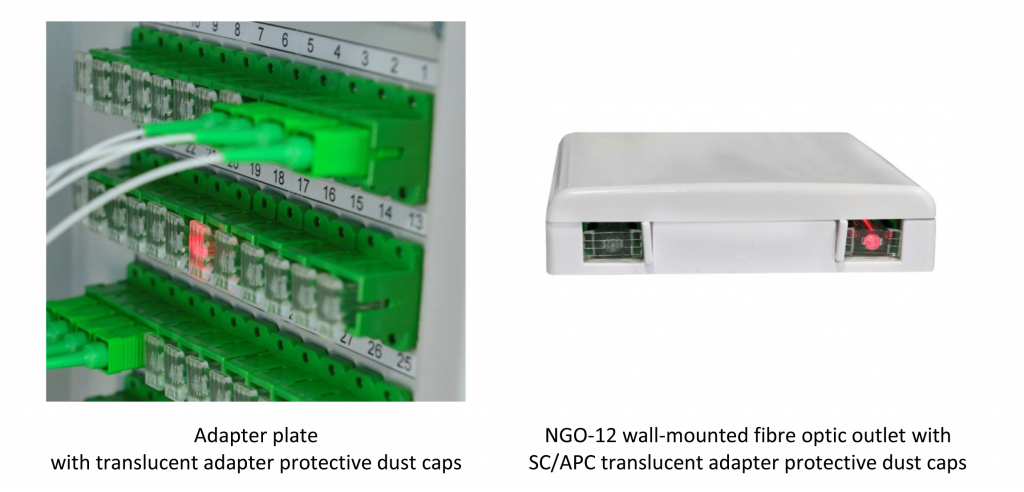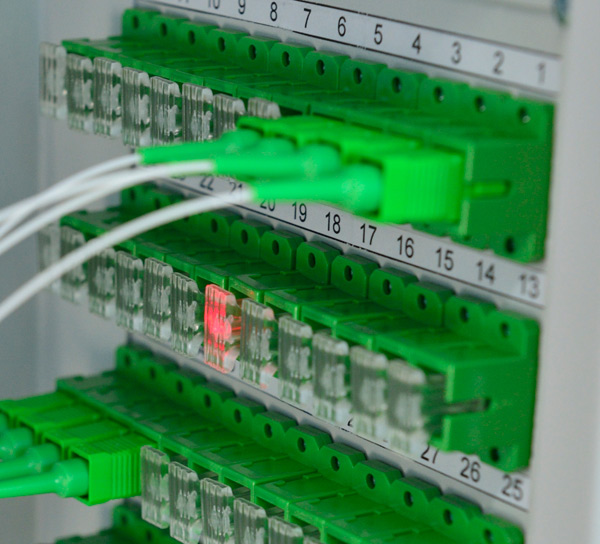In the era of fibre optic access networks a fibre organization and management is very complex. The documentation of fibre optic routes is very complicated, illegible and often incorrectly made. In addition the subscribers in passive optical networks (PON) are dispersed and each fibre is terminated in a different location. On top of that it sometimes happen that inexperienced installer companies don’t leave proper documentation necessary for fibre identification in the future. What can be done in such cases? How to trace fibres without relevant documentation?
Telecom and data communication systems using optical connectors and adapters include requirements for the identification of specific optical fibers during installation, interconnection and maintenance testing. Within these systems, connections between fibers are typically accomplished by the use of optical patch panels. A patch panel includes optical connectors pre-installed into the backside of connector adapters. The front side of the adapters are covered using a dust cap preventing dust from entering the adapter and contaminating the end face of the back side connector. When a specific connector is needed for interconnection with a fiber optic patchcord to connect active equipment, it is necessary to perform optical fiber tracing for connector identification. Commonly a red laser diode source is used from a Visual Fault Locator (VFL).

With conventional connectors and adapters either the connectors must be removed from their respective adapters to allow for the visual identification of the visible light, or the adapter dust cap must be removed. In both cases the operator must peer into the connector or adapter to view the visible light. In either case, the opportunity then exists for eye damage from the invisible light if a connector with infrared transmission laser power is viewed accidentally. Further, removing the connector from its respective adapter or removing the dust cap from the connector may allow dust and contaminants to reach the polished end face of the ferrule, resulting in signal degradation.
Conventional dust caps are typically fabricated from opaque plastic materials. They provide protection of the adapter interior against dust ingress but do not allow for the identification of the visible light emanating from the connector through the dust cap.
The translucent adapter dust caps are the simple and safe solution allowing fibre identification with the use of a visual fault locator. They not only protect the adapter interior and connected from the back side connector against contamination, but are transparent for the visible laser light allowing easy fibre identification. The desirable feature for the adapter dust cap is to diffuse the visible light source of sufficient power to cause eye damage if viewed along the optical axis. The use of translucent adapter dust caps plugged on the front side of the patch panel provi
des quick and safe for the operator and connector method of fibre identification with the use of simple visual fault locator. This is the cheapest and the quickest way of fibre identification. No extensive fibre optic knowledge is rquired from the operator nor any complex and expensive measuring equipment.
The SC adapters with translucent dust caps offered by Optomer are compliant with IEC 61754-4, IEC 60874- 1, IEC 61300 standards.
